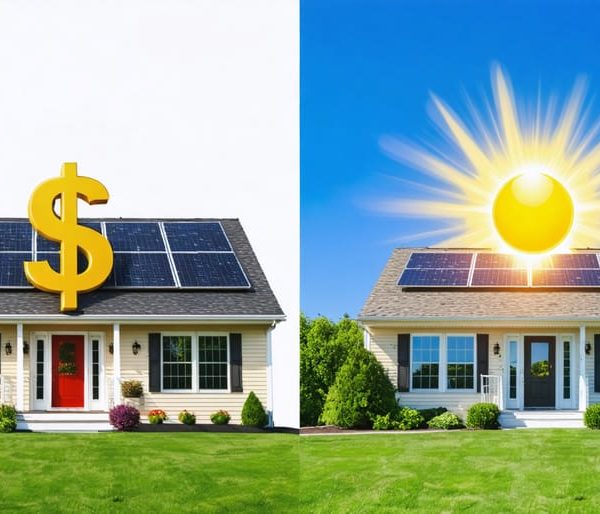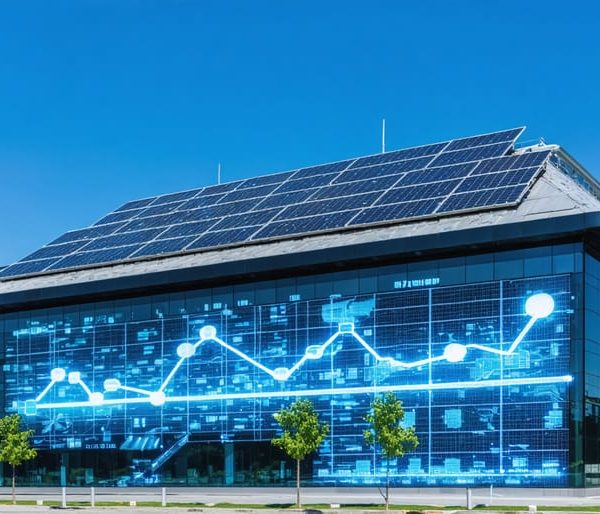Solar Energy’s True Value: How EROI Impacts Your Investment
Imagine turning $1 worth of energy into $20 worth of power – that’s the fascinating world of Energy Return on Investment (EROI). This critical metric reveals how much usable energy we get back compared to the energy we invest in producing it, shaping everything from solar panel installations to oil drilling decisions. For homeowners and businesses alike, understanding EROI helps make smarter energy choices that benefit both the environment and the bottom line.
Think of EROI as nature’s return on investment calculator. When early oil wells yielded 100 barrels of oil for every barrel’s worth of energy spent drilling, they boasted an impressive EROI of 100:1. Today’s renewable technologies are rapidly improving their EROI ratios, with solar panels now delivering energy payback periods of just 1-4 years in optimal conditions.
For anyone considering alternative energy solutions, EROI provides a powerful lens to evaluate different options and maximize the value of their energy investments. It’s not just about initial costs – it’s about long-term energy productivity and sustainability.
Understanding Energy Return on Investment
What Makes Up EROI?
EROI calculations involve comparing the total energy produced by a system throughout its lifetime to the total energy required to create, maintain, and eventually decommission it. Think of it like a recipe: you need to know both what you put in and what you get out to determine if it’s worth making.
The “energy invested” side includes manufacturing energy (from raw material extraction to final assembly), transportation costs, installation energy, maintenance requirements over the system’s lifetime, and end-of-life recycling energy. For solar panels, this includes everything from mining silicon to shipping panels to your roof.
On the “energy returned” side, we measure the total usable energy the system produces during its operational lifetime. For solar panels, this typically means electricity generated over 25-30 years. The calculation looks simple – divide energy returned by energy invested – but gathering accurate data for each component requires careful analysis.
Modern tracking methods have made EROI calculations more precise, helping consumers and businesses make better-informed decisions about their energy investments. Understanding these components helps you evaluate different energy technologies and their long-term value more effectively.

Why EROI Matters for Solar Investment
Understanding EROI is crucial when considering solar installations because it helps you make informed decisions about your renewable energy investment. When you calculate your solar investment returns, EROI provides a clear picture of how much energy you’ll get back compared to what you put in.
A higher EROI indicates a more efficient and profitable solar installation. For example, if your solar panels have an EROI of 10:1, they’ll produce ten times more energy than what was required to manufacture and install them. This translates to better long-term savings and environmental benefits.
Modern solar technology typically offers increasingly favorable EROI ratios, making it an attractive option for both homeowners and businesses. Factors like panel efficiency, installation location, and maintenance requirements all influence your system’s EROI. By considering these elements, you can optimize your solar investment for maximum returns while contributing to a more sustainable future.
Remember that EROI isn’t just about immediate financial gains – it’s about ensuring your renewable energy choice makes sense both economically and environmentally over the long term.
Solar Energy’s EROI Numbers
Modern Solar Panel EROI Rates
Modern solar panels have made remarkable strides in energy efficiency, with current EROI rates ranging from 8:1 to 15:1 in optimal conditions. This means that for every unit of energy invested in manufacturing and installing solar panels, they return 8 to 15 times that amount over their lifetime. These impressive returns have significantly improved the solar panel payback period, making them an increasingly attractive investment for homeowners and businesses alike.
Recent technological advances have boosted these returns even further. The latest monocrystalline panels achieve conversion efficiencies above 20%, while manufacturing processes have become more energy-efficient. Panels produced in regions with clean energy grids show even better EROI rates, sometimes reaching up to 25:1.
Location plays a crucial role in determining actual returns. Sunny regions like Arizona or California typically see higher EROI rates compared to areas with less direct sunlight. However, even in less sunny locations, modern panels perform remarkably well thanks to improved low-light performance and durability.
With an average lifespan of 25-30 years and declining manufacturing energy costs, today’s solar panels offer some of the best energy returns among renewable technologies. This efficiency, combined with falling installation costs, makes solar an increasingly viable option for sustainable energy production.
How Solar EROI Compares to Traditional Energy
When comparing solar energy to traditional energy sources, the EROI numbers tell an interesting story. While oil and gas historically dominated with high returns (around 25:1 in their early days), their EROI has steadily declined to roughly 15:1 as easily accessible reserves become scarcer.
Solar technology, on the other hand, has seen remarkable improvements. Modern solar panels now achieve an EROI between 7:1 and 12:1, depending on the location and installation type. This is significantly better than coal’s current EROI of about 5:1, and it continues to improve as solar technology advances.
What makes solar particularly attractive is its upward trajectory. While fossil fuel EROI continues to decline as extraction becomes more challenging, solar EROI is rising thanks to more efficient manufacturing processes and longer-lasting panels. Today’s solar installations can produce energy for 25-30 years with minimal maintenance, consistently improving their lifetime energy return.
Other renewables show varying results: wind power demonstrates strong EROI numbers (around 16:1), while biomass tends to have lower returns (around 3:1). Nuclear power maintains a steady EROI of about 14:1, though this number is debated due to long-term storage considerations.
For homeowners and businesses, these comparisons highlight solar’s growing competitiveness. While initial EROI numbers might seem lower than some alternatives, solar’s improving efficiency and declining costs make it an increasingly attractive long-term energy investment.

Maximizing Your Solar EROI
Location and Panel Placement
The placement of solar panels plays a crucial role in determining their energy return on investment. To maximize energy savings, careful consideration must be given to both location and positioning factors.
South-facing installations typically yield the highest returns in the Northern Hemisphere, capturing the most sunlight throughout the day. The optimal tilt angle varies by geographical location but generally falls between 30-45 degrees in most regions. This positioning helps panels receive direct sunlight while allowing natural cleaning from rainfall.
Shade is a significant factor that can dramatically impact energy production. Even partial shade from trees, buildings, or other structures can reduce efficiency by 25-50%. Professional installers use solar pathfinders and digital tools to identify the best placement spots, avoiding potential shadow patterns throughout the year.
The mounting system also affects EROI. Roof-mounted systems are most common for residential installations, offering good sun exposure while utilizing existing structures. Ground-mounted systems, while requiring more initial investment, can be positioned perfectly and are easier to maintain, potentially offering better long-term returns in suitable locations.
Weather patterns and local climate conditions should influence placement decisions, as areas with high snowfall or severe weather may require additional considerations for panel durability and accessibility.

Technology Selection and Maintenance
Choosing the right technology and maintaining it properly plays a crucial role in maximizing energy return on investment. For solar installations, high-efficiency panels from reputable manufacturers typically deliver better EROI despite higher upfront costs. Look for panels with efficiency ratings above 20% and warranties of 25 years or longer, as these indicate better long-term performance and durability.
Regular maintenance significantly impacts EROI over time. Schedule professional inspections annually to check for issues like micro-cracks, loose connections, or degraded components. Clean your panels every 3-6 months, depending on local conditions, to prevent dust and debris from reducing efficiency. In snowy regions, invest in snow removal systems to maintain winter production.
For wind energy systems, choosing the right turbine size and height based on your local wind patterns is essential. Regular blade inspection and maintenance, along with periodic gear oil changes, help maintain optimal performance. Battery storage systems require monitoring of charge cycles and temperature conditions to prevent premature degradation.
Modern monitoring systems with real-time performance tracking help identify efficiency drops early, allowing for prompt maintenance. Consider automated cleaning systems for large installations to reduce maintenance costs. Remember that while higher-quality equipment costs more initially, it typically delivers better EROI through increased reliability and lower maintenance needs over time.
Understanding energy return on investment (EROI) is crucial for making informed decisions about solar energy adoption. As we’ve explored, solar technology continues to improve, with modern panels offering increasingly favorable EROI ratios that often exceed 10:1 in optimal conditions. This means that for every unit of energy invested in manufacturing and installing solar systems, you can expect to receive at least ten units of clean energy in return.
When considering solar installation, remember to factor in your specific location, panel quality, and installation configuration to maximize your energy returns. While upfront costs may seem significant, the long-term energy yields and environmental benefits make solar an increasingly attractive investment for both homeowners and businesses.
By staying informed about EROI metrics and working with qualified installers, you can make confident decisions about your solar investment. The future of solar energy looks promising, with advancing technology continually improving efficiency and return rates. Whether your motivation is environmental stewardship or financial savings, understanding EROI helps ensure your solar investment aligns with your goals while contributing to a more sustainable future.











